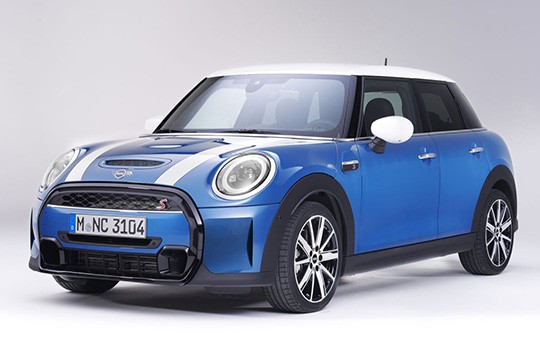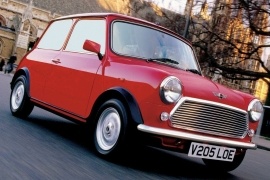MINI Classic Models/Series Timeline, Specifications & Photos
First production year: 1997
Engines: Gasoline
Body style: Hatchback
While a three-door S version was already natural for the MINI, the 5-door version meant that someone could take the same car for its personal pleasure and to use it as a family car as well.
MINI introduced the fourth generation of the Cooper S in 2021. The carmaker didn't offer a 5-door version for the sporty model since the brand's revival in 2000, but soon the customers started to ask for a more punchy version with a set of doors for the rear passengers. Thus, they could claim that they bought a family car.
While some purists claimed that a 5-door version was blasphemy for the MINI, others just nodded their heads and paid for it. It was a truly practical sports hatchback vehicle in the mini segment. The fourth generation of the MINI Cooper S four-door featured a striking front fascia with a grille surrounded by a piano-black trim. A set of additional air-intakes made their way in the front apron to feed the turbocharged engine. The Cooper S was available with an 18" Pulse Spoke two-tone set of wheels apart from the standard 17" ones from its sides. In the rear, the dual exhaust took center stage under the bumper.
Inside, MINI received a 5" instrument cluster fitted as standard. An 8.8" touch-screen dominated the top of the center stack. The dashboard's front panel sported a carbon-fiber trim. Its front sport-bucket seats featured high-bolstering. Its five-doors configuration allowed a better ingress and egress from the car, while the rear bench seatback was split-folding.
Under the hood, MINI installed a turbocharged 2.0-liter engine with TwinPower technology that reduced the lag and rocketed the car to 100 kph (62 mph) in a mere 6.9 seconds (6.7s for the automatic transmission).
By 1997, Mini was already an ancient vehicle, and still, the British customers loved it, but the sales were stalling, leading the carmaker to create a refreshed version for the old vehicle.
The Mini is one of those iconic vehicles that made history on the rally stages, beating much more powerful competitors. Its underdog status, funny appearance, and excellent fuel efficiency kept it on the assembly lines far more than it was intended to when it was introduced to the UK's market in 1959.
Even after four decades since it was introduced, the Mini kept its original look and size. But it went through some changes that improved its appearance. For starters, it featured new headlights with chromed surroundings and better light bulbs inside. Then, the A-shaped grille was chromed, and so was the bumper, even though most carmakers had already ditched that trend in the early '80s. On the sides, the automaker added some extensions on the wheel arches to prevent wheels from splashing the bodywork. Nevertheless, they were needed for the enlarged tracks.
Inside, at first sight, it was the same old Mini fitted with tiny front bucket seats and a bench for two in the back. And yet, there were some differences, such as the three-spoke steering wheel fitted with an airbag and the wood veneers on the dashboard. Yet, the power windows were nonexistent, and the sound system was there just for fun.
Under the hood, Rover installed an improved, fuel-injected, 1.3-liter engine for the 1997 Mini. It wasn't very powerful, but its 62 hp (63 PS) power was more than enough to easily move around the car inside a city. Unfortunately, the carmaker couldn't fit a five-speed gearbox on this vehicle.

